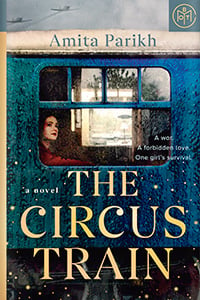

Historical fiction
The Attic Child
by Lola Jaye
View audiobook
Quick take
In this sweeping historical epic, the attic of a London mansion braids together two tales of identity and belonging.
Good to know
Emotional
400+ pages
Social issues
70s
Synopsis
A hauntingly powerful and emotionally charged novel about family secrets, love and loss, identity and belonging.
Two children trapped in the same attic, almost a century apart, bound by a shared secret.
Early 1900s London: Taken from his homeland, twelve-year-old Celestine spends most of the time locked away in the attic of a large house by the sea. The only time Celestine isn’t bound by confines of the small space is when he is acting as an unpaid servant to English explorer Sir Richard Babbington. As the years pass, he desperately clings on to memories of his family in Africa, even as he struggles to remember his mother’s face, and sometimes his real name . . .
1974: Lowra, a young orphan girl born into wealth and privilege whose fortunes have now changed, finds herself trapped in the same attic. Searching for a ray of light in the darkness of the attic, Lowra finds under the floorboards an old-fashioned pen, a porcelain doll, a beaded necklace, and a message carved on the wall, written in an unidentifiable language. Providing comfort for her when all hope is lost, these clues will lead her to uncover the secrets of the attic.
Content warning
This book contains a scene depicting sexual assault.
Read a sample
Get an early look from the first pages of The Attic Child.
Why I love it
Denny S. Bryce
Author, Wild Women and the Blues
In a heartbreaking tale of privilege, racism, and identity, two abused children, banished to an attic of the same house nearly a hundred years apart, find the strength to regain their stolen identities and repair their battered souls. Lola Jaye’s new novel The Attic Child expertly meshes the genres of historical fiction, mystery, and adventure, and is equal parts devastating and life-affirming.
In 1905, Dikembe is a young boy in the Congo when he is taken from his home and his beloved mother by a British explorer. He has no idea why his mother appears to have loaned him to Sir Richard Babbington. But in England, nothing is as he expected it to be. Dikembe spends months waiting to be returned to the Congo, but Babbington has other plans. He changes Dikembe’s name to Celestine, teaches him English, dresses him in “proper” British attire, and shows him off at parties. Meanwhile, Celestine longs for his family. But this is only the beginning of the hardships that await him.
In 1993, Lowra, an orphan, is a thirty-year-old woman coping with the emotional damage from the abuse she endured as a child—in the same house where Celestine lived, and she was also banished to the same attic. Slowly, Lowra gathers the courage to search for the truth behind the items she found in the attic beneath the floorboards.
The Attic Child is filled with unforgettable characters and edge-of-your-seat storytelling. A must-read and a fantastic story told with great heart and passion.






































































